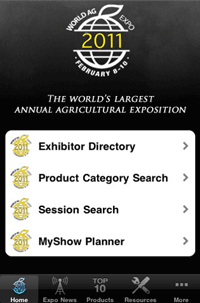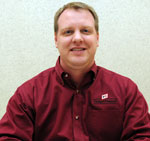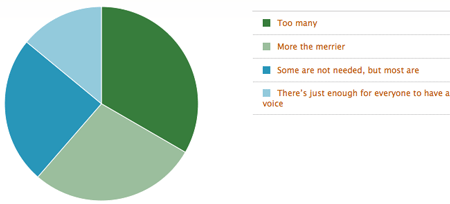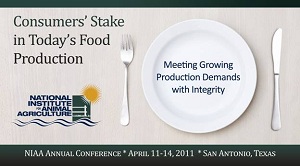 Now there’s an app for the World Ag Expo. I have never had the opportunity to attend but might have to get there via mobile!
Now there’s an app for the World Ag Expo. I have never had the opportunity to attend but might have to get there via mobile!
For the first time in 44 years, World Ag Expo is going mobile. Available for both the iPhone and all phones with the Android Market, World Ag Expo’s Application gives its users access to everything the expo has to offer.
“World Ag Expo 2011 is themed Tools for Agri-Business, and our new app is just that – a tool for success at the expo,” said Lee Coito, 2011 Chairman. “Our app adds another free option for our attendees, building on our success in providing tools to help attendees identify in advance the exhibitors and seminars they want to see.”
By coupling with the Digital Show Grounds feature on worldagexpo.com, the app provides a mobile option for attendees to use to search products by category, explore the exhibitor directory, learn more about the seminars, view the Top-10 products and more. The MyShow Planner feature helps users organize and plan an agenda, making sure that they get the most out of their trip to World Ag Expo.
In addition the app allows users to search for hotels and nearby restaurants, check the weather and more in the resources portion of the app.
You can find it in the iTune App Store and Android Market.







 According to University of Illinois professor Dr. Fred Below, there are “Seven Wonders of the Corn Yield World,” and one of the most important is nitrogen.
According to University of Illinois professor Dr. Fred Below, there are “Seven Wonders of the Corn Yield World,” and one of the most important is nitrogen.  In this week’s program we’re going to look ahead to the
In this week’s program we’re going to look ahead to the 
